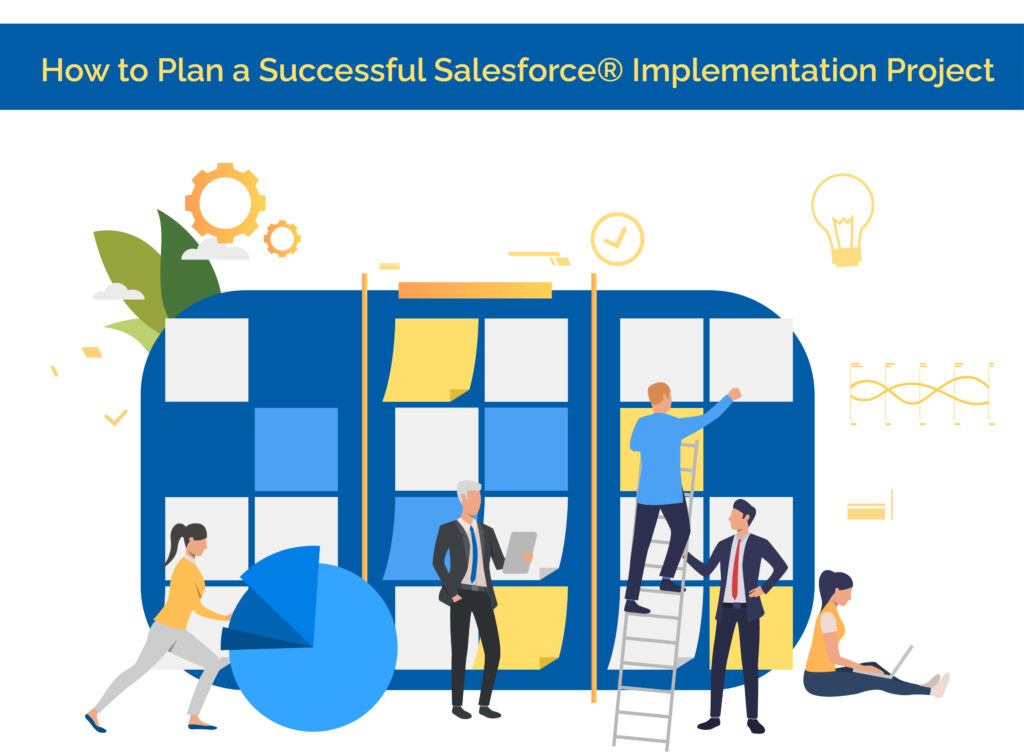How to Plan a Successful Salesforce® Implementation Project

Planning a Salesforce® implementation project requires careful consideration and a well-defined roadmap to ensure a successful and smooth transition. Salesforce is a powerful platform that can transform your business operations, enhance customer relationships, and drive growth. However, without proper planning, the implementation process can be complex and overwhelming. In this blog, we will outline the key steps to plan a successful Salesforce implementation project and set the foundation for a successful CRM transformation.
1. Define Your Objectives:
The first step in planning a Salesforce implementation project is to clearly define your objectives and identify the specific business challenges you want to address. Whether it's improving sales processes, enhancing customer service, or streamlining marketing campaigns, having well-defined goals will guide the implementation process and help measure success. Ensure that your objectives are specific, measurable, achievable, relevant, and time-bound (SMART) to provide a clear direction for the project.
2. Assemble a Competent Implementation Team:
Building a competent implementation team is crucial for the success of your Salesforce project. Identify key stakeholders from different departments who will be impacted by the implementation and involve them from the early stages. Select a project manager who will oversee the implementation process and coordinate with the implementation partner. Assign dedicated team members who understand your business processes and can provide valuable insights during the implementation.
3. Choose the Right Implementation Partner:
Selecting the right Salesforce implementation partner is a critical decision. Look for partners who have extensive experience, a proven track record, and expertise in your industry. Evaluate their certifications, client testimonials, and portfolio to ensure they align with your business requirements. Engage in discussions with potential partners to assess their communication skills, collaborative approach, and ability to understand your unique needs. A reliable implementation partner will guide you throughout the process and maximize the value of your Salesforce investment.
4. Conduct a Current State Assessment:
Before diving into implementation, it's crucial to conduct a thorough assessment of your current processes, data, and systems. Identify pain points, bottlenecks, and areas that require improvement. This assessment will help you determine the gaps between your current state and the desired future state with Salesforce. It will also provide valuable insights for customization and configuration, ensuring that Salesforce is tailored to your specific needs.
5. Develop a Comprehensive Implementation Plan:
Creating a well-structured implementation plan is key to staying organized and on track. Break down the implementation into smaller phases or milestones, each with clear objectives, timelines, and deliverables. Define the scope of each phase, including the modules and functionalities to be implemented. Allocate resources, set realistic deadlines, and establish communication channels for reporting progress. A detailed plan will serve as a roadmap for the implementation team and ensure that everyone is aligned.
6. Configure and Customize Salesforce:
Salesforce offers a high level of customization to meet your unique business requirements. Work closely with your implementation team and configure Salesforce to align with your processes and workflows. Leverage standard Salesforce features and explore customization options to tailor the platform to your specific needs. Ensure that data migration is carefully planned and executed, maintaining data integrity throughout the process.
7. Provide Comprehensive User Training:
User adoption is crucial for the success of your Salesforce implementation. Conduct comprehensive training sessions to educate users on how to navigate Salesforce, perform their day-to-day tasks, and leverage its capabilities. Provide hands-on training, create user manuals, and offer ongoing support to address any questions or concerns. Encourage user feedback and continuous improvement to enhance user adoption and maximize the benefits of Salesforce.
8. Test and Validate:
Thorough testing is essential before rolling out Salesforce to your entire organization. Conduct comprehensive system testing to ensure that all functionalities work as expected. Perform user acceptance testing (UAT) with a group of users to validate the system against real-life scenarios. Identify and address any
Don't miss out on the opportunity to revolutionize your business with Salesforce. Request a proposal from Paramyter.tech today and watch your success soar! Click here to get started.
For Latest News & Update
Want Receive the Best Salesforce Insights? Subscribe Now!
We can help you to create your CRM for better business revenue.